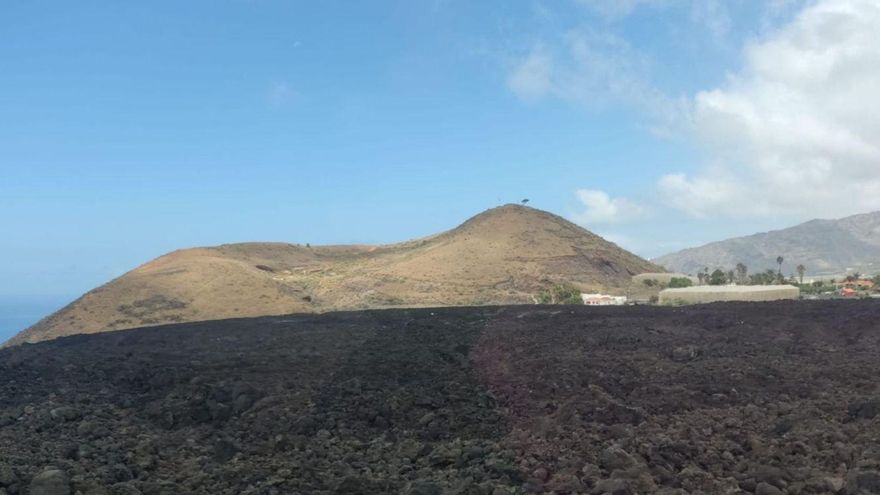The Tajogaite or Cumbre Vieja volcano has left a lot of destruction and uncertainty, but it boosted the role of Spanish science professionals in what has become the most studied volcanic eruption in history. Minister of Science and Innovation, Diana MoranteMinister of the Presidency, Relations with Courts and Democratic Memory, Felix BolanosYesterday he visited the “beautiful island” to learn about the more than 100 scientists who conducted their research on the volcano over the past year with the priority of ensuring the safety of palm trees in the face of what they described as the greatest natural emergency in Spain’s history.
Marking the first anniversary of the Tagugate eruption, the Teatro Circo de Marte in Santa Cruz de la Palma yesterday hosted this tribute to “those who worked faithfully to protect and defend the islanders” from the 85-day natural disaster. Lava and ash on the surface, which, a year after starting, still continue to affect the island, with gases continuing to emanate from the Earth’s interior and prevent recovery from developing.
Political leaders, including the President of the Canary Islands, Angel Victor Torres; Representative of the central government in the islands, Anselmo PestanaPresident of the Cabildo de La Palma, Mariano Hernandez Zapata– The audience cheered the scholars on several occasions. Secretary Diana Morant recalled how while many of the honored scholars were already on La Palma a year earlier, others had to “pack their bags and come to the island”. “With everyone’s work, the signals sent by the Earth were decoded, while they contributed their knowledge to the decision-making and implementation of measures within the emergency plan,” he said.
Addressing the scientists present at the event, the Minister said, the crucial role they played in the face of the darkness of fear and uncertainty, the whole world has turned to you to search for the light in science. Morant recalled what President Pedro Sanchez had already announced in July: The Canary Islands will host the National Institute of Volcanology. His whereabouts were not disclosed, either in Tenerife or La Palma, or with delegations on both islands.
For his part, Minister Felix Bolanos recalled some scenes “that were etched in the retina” of those who were on the island during the eruption of the volcano. “We have helped scientists take action and policy decisions to protect people who are suffering,” he said, adding that “in the face of uncertainty, you can only give us certainty.”
The President of the Canary Islands, Angel Victor Torres, also spoke, congratulating the scientific community “from the bottom of his heart”, because “although we are still at the stage of reconstruction, there are not always works of justice like today”, which allow recognition of the “major” work For scientists and specialized personnel to anticipate events and minimize their consequences.
Torres stressed that the eruption of Tagugit was “a global event in which the coordination was remarkable, as science once again demonstrated its immeasurable value in predicting roughly where and when the eruption would be, and avoiding injuries and deaths, which has always been the greatest objective of this emergency.” Torres noted that the volcanologists “almost apologised for failing by 300 metres” in calculating where the Earth would open, but stressed that “time and the final equilibrium speak for themselves about what was a historical fact.”
Representatives of various award-winning scientific institutions demonstrated at the Teatro Circo Marti. the first was Carmen Lopez, of the National Geographic Institute (IGN), who noted that this volcanic eruption was “a challenge to emergency management” and “also to scientific development and the use of new technologies.” “It remains a challenge, as some of its risks continue to hamper recovery efforts,” he added. For Lopez, this first year’s balance is “painful,” considering the eruption “the most important disaster in our history due to population vulnerability and infrastructure exposure to volcanic hazards.”
Honorable Mention
Director of the Volcanic Institute of the Canary Islands (Involcan), Nemesio Perezstressed that science is in the service of society and we all have to remember the victims.” He drew an analogy between science and love, saying that it is “the only thing that grows when it is shared” and claimed a “Canarian strategy to reduce volcanic hazards or we will learn nothing.”
The role of scholars’ interventions is over Ines Galindo, of the Institute of Geology and Mining of Spain, a body based on CSIC, who mentioned how when the eruption began, they left behind all the research projects “and almost our families”, and gave all their dedication in case of emergency. “Those were tough days because of the work and the pressure we were put on, but the scientific community responded to the emergency and rose to the occasion,” Galindo stressed. He highlighted “cooperation between institutions” and “the effort to agree on hypotheses and reach agreements, disseminate information and convey a coherent message.”
Mariano Hernandez Zapata, President of La Palma, noted “the need not to forget that preventive action began before the explosion, which allowed for a coordinated and effective response as possible”, with the protection of neighbors as a priority. To achieve this, the Cabildo chief noted that “it was the scientific professionals, along with the emergency services, who were able to ensure that the damage was only material.” He also noted the “absolute” commitment of the scientific community to the island, with the support that it “continues to preserve today, especially in Puerto Naos and La Pombilla, through continuous monitoring and monitoring of air quality and the presence of gases of volcanic origin.”





